Radio imaging with the Very Large Array (VLA) captures newborn massive star clusters as they emerge from their birth material in the galaxy NGC 4449. These “super star clusters” contain tens to hundreds of thousands of stars. The young stars produce hot ionized gas which is detectable at radio wavelengths, shown in red here. An image from the Sloan Digital Sky Survey shows the visible starlight in gold.
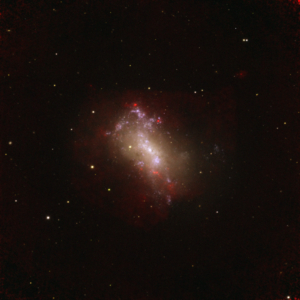
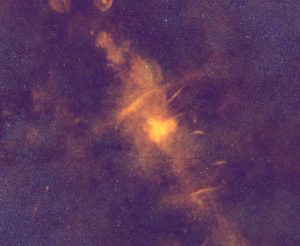
The Center of our Milky Way Galaxy
Through the layers of dust that shroud the center of our galaxy from optical telescopes lurks a complex hub of activity. In this wide field Very Large Array (VLA) image, the supermassive black hole in the center of our Galaxy shines brightly in radio waves. Surrounding it are the winds and rivers of material caught in its gravitiational and magnetic wakes. Bubbles of star-formation and supernovas scatter around.
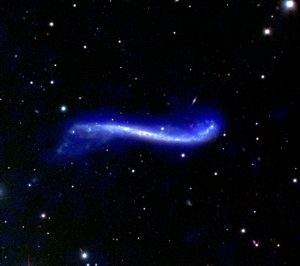
Warped Disk of Galaxy UGC 3697
The “Integral Sign” galaxy, UGC 3697 is an edge-on spiral galaxy with an unusually pronounced warp in both its stellar and gaseous disks. The neutral Hydrogen gas, represented in blue, is overlaid on an optical image of the stars of the galaxy. Unlike in normal spiral galaxies, the brightest concentration of neutral Hydrogen is not found near the center of UGC 3697 but along its western edge, where the Very Large Array (VLA) has detected a bright, extended region of emission. In addition, plumes of gas extend to considerable height above and below the disk of the galaxy.
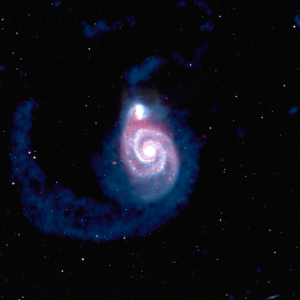
Multiwavelength Whirpool
In this composite image of the Whirlpool Galaxy, the Very Large Array has captured the vastness of this colliding pair like no other telescope can. In white is how the galaxies appear to optical telescopes: one giant spiral galaxy with a smaller one hanging off an arm. The VLA sees a much bigger picture. Colored blue are the cast-off gases that were once the outer spiral arms of these galaxies. In red are the areas where new stars are being born.
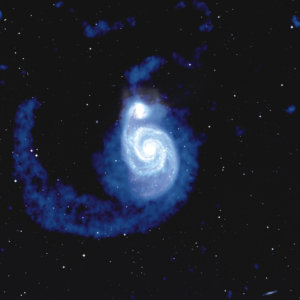
The Collision of M51
In this composite image of the Whirlpool Galaxy, the Very Large Array has captured the vastness of this colliding pair like no other telescope can. In white is how the galaxies appear to optical telescopes: one giant spiral galaxy with a smaller one hanging off an arm. The VLA sees a much bigger picture. Colored blue are the cast-off gases that were once the outer spiral arms of these galaxies. They’ve been yanked apart and left when the smaller galaxy passed by.
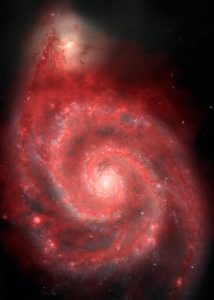
New View of the Whirlpool
This is the most detailed radio image of the Whirlpool Galaxy ever captured. The Very Large Array observed this pair of interacting galaxies as a demonstration of its new upgrade to the world’s most powerful radio astronomy camera. In white is the image of the Whirlpool as taken by optical telescopes. In red are the gas clouds imaged by their radio waves by the VLA. This is a very rich environment for star formation.





